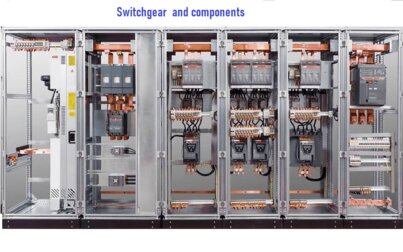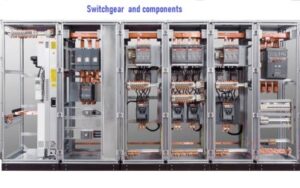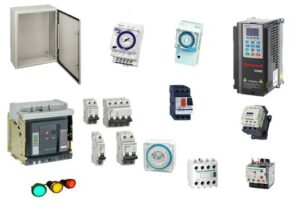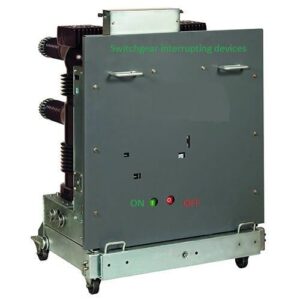
Table of Contents
Introduction of Switchgear
The ability to use electricity in daily life is one of humanity’s greatest benefits, but supplying that power must be done safely. It is thus quite difficult to use safety measures in order to maintain the security level of electrical distribution. Devices of many kinds can be used in industrial, residential, and other settings to protect electrical equipment and the connections to it. Due to its many characteristics and functionalities, a switchgear device is used to get around this. This tool is intended to help with weight distribution and carriage while keeping the electrical connections in good condition. In order to lessen the harm, it helps to identify the flaws and failure linkages.
What is Switchgear?
Switchgear is a part of a system that is used to control, switch between, and protect electrical devices and circuits. Electricity usage has significantly grown, thus it is necessary to provide a steady supply. Power systems must offer protection to equipment and machinery against significant failures. Machinery like generators and motors are frequently turned on and off to ensure the continuity of the power supply; the tools used to do this are referred to as switchgear.
Switchgear, in its broadest sense, refers to the complete spectrum of switching devices as well as the equipment used to monitor, measure, protect, and regulate them.

What are the functions and components of switchgear
- maintaining the standard load current
- It protects the machinery from fault currents and short circuits.
- The circuits are isolated from power supply by this device.
- Because more than one source may supply a load, the system is more reliable.
- It has the ability to open and close electrical circuits in both normal and pathological situations.
- It can function manually under typical circumstances, ensuring both the operator’s safety and proper use of electrical energy.
- It functions mechanically when circumstances are abnormal. When a defect occurs, this device locates it and disconnects the damaged component from the power system. Thus, it protects against harm to the power system.
- Quick Action
- Completely Reliable
- Provision for Manual Control
- Provision for Manual Control
- Definitely Certain Discrimination
- setting or disabling the typical load current
- the fault current being cleared
Quick Action
It needs to be able to handle electrical problems without any delays. Otherwise, critical electrical equipment and power system components will suffer damage from short circuits, malfunctions, and overloads (e.g., transformers, generators, etc.).
Completely reliable
Businesses shouldn’t settle for anything less than the best switchgear that can safely handle their power needs. Because of its dependability, it should be able to perform all of the aforementioned tasks with relative ease.
Provision for Manual Control
You should be able to go to the switchgear room and conduct the necessary procedures to fix any electrical problem.
Definitely Certain Discrimination
Switchgear prevents power supply system disruptions from happening even in the case of a malfunction or short circuit. By being able to identify and isolate the area that is damaged, it ought to be able to uphold that.
Components

- Switches
- Relays
- Isolator
- Circuit Breaker (MCM, MCCB)
- Potential and Current Transformer ( CT/PT)
- Indicating Device:
- Lightning Arresters
- Fuses
How does switchgear operate?
The circuit breaker and relay are the two main components of the automated protective switchgear. When a fault occurs, the relay switches on and typically closes the trip circuit, disconnecting the malfunctioning line automatically. Following that, the functional and healthy part operates under the usual and necessary supply load.
Therefore, there is no supply disruption or equipment damage. All electric devices have the potential to have a strong current during the occurrence of any problem or defect in the electrical power system, which increases the likelihood that the device will be destroyed and the supply will be interrupted.
Types of Switchgear
According to the voltage level, switchgear may be divided into the following categories:
Low voltage (LV) Switchgear
Medium voltage (MV) Switchgear
High voltage (HV) Switchgear
Low voltage (LV) Switchgear
Low-voltage applications often require switchgear with a 1000 V AC and 1500 V DC rating. Earth leakage circuit breakers (ELCBs), air circuit breakers (ACBs), switch fuse units (SFUs), off-load isolators, HRC fuses, miniature circuit breakers (MCBs), and moulded case circuit breakers (MCCBs), among other low voltage devices, are often used. These devices are all necessary to protect the LV system. This is used most frequently on LV distribution boards.
High Voltage Switchgear
High-voltage power systems are those that operate at voltages greater than 36 kV. Switching operations result in significant arcing because of the high voltage level. So when building high-voltage switchgear, special attention must be paid. High-voltage circuit breakers, such as SF6 or vacuum circuit breakers, are the main component of HV switchgear. So for safe and dependable functioning, high-voltage circuit breakers need to have certain properties.
High-voltage circuit breakers malfunctioning during tripping or switching are relatively uncommon. These circuit breakers frequently remain in the ON position and may be used after a period of time. Circuit breakers must thus be dependable enough to guarantee safe functioning when necessary.
Medium-voltage (MV) switchgear
Switchgear with a 3.3 KV to 33 KV class rating is used in medium-voltage applications.
Medium-voltage switchgear’s main function is to distribute electrical energy among various electrical networks. They make up most of the equipment in the substation, like vacuum switchgear and gas-insulated switchgear, air magnetic switchgear, SF6 gas-insulated switchgear, and low-oil and bulk oil circuit breakers.
They could be indoor or outdoor models without a metal enclosure, indoor or outdoor types with a metal enclosure, etc. Oil and SF6, or vacuum may serve as the medium of interruption. Regardless of the kind of CB deployed in the electrical system, the basic function of an MV power network is to stop the flow of current during fault situations. although it could possibly be able to work in other circumstances.
It should be possible for medium-voltage switchgear to:
- standard ON/OFF switching procedure.
- current interrupt due to short circuit.
- Capacitive current switching.
- Inductive current switching
- a particular application.
Switchgear insulating medium
Medium voltage electrical switchgear is used for indoor switchgear and outdoor switchgear systems up to 75 kilovolts. Since uses and budgets differ, there are three insulating technology possibilities for medium voltage equipment.

insulated by gas switchgear
insulated by air switchgear
Shielded solid switchgear
Mineral oil is a petroleum-based insulator with dependable electrical insulating qualities that has been used for a long time.
Indoor Switchgear and Outdoor Switchgear
Circuit breakers, switches, bus bars, electrical and mechanical instruments, and instrument transformers are the primary parts of switchgear. Switchgear must be housed in power plants and substations in a certain way to keep workers safe during operation and maintenance and to make sure that a problem with any part of the gear will only affect a small area.
Switchgear may be generally categorized based on the voltage it must manage into
- Outdoor switchgear
- Indoor switchgear
Indoor switchgear
Switchgear is often built indoors at voltages below 66 KV due to financial reasons. It typically has a metal covering. In this kind of construction, an earthed metal case entirely encloses all live components. The actual goal of this method is to find and isolate any problem to its source
Outdoor switchgear
We set up outside switchgear at voltages greater than 66 kV. It is not cost-effective to place all of this equipment indoors because, with such voltage levels, the clearances between wires and the space needed for main switches, electrical circuit breakers, transformers, and other instruments grow so large.
A typical outdoor substation with switchgear is seen in the diagram. Due to the wide electrical clearance required by high voltages, all substation equipment, including MCBs, MCCBs, or other circuit breakers, isolators, transformers, and bus bars, takes up a lot of room.

Leave a Reply